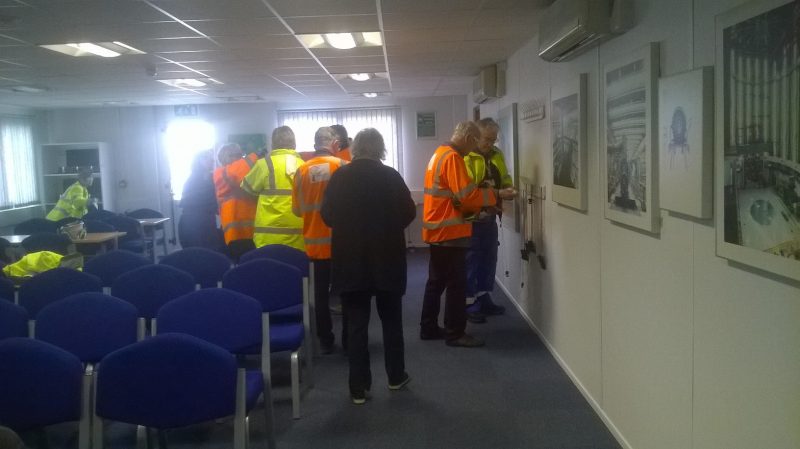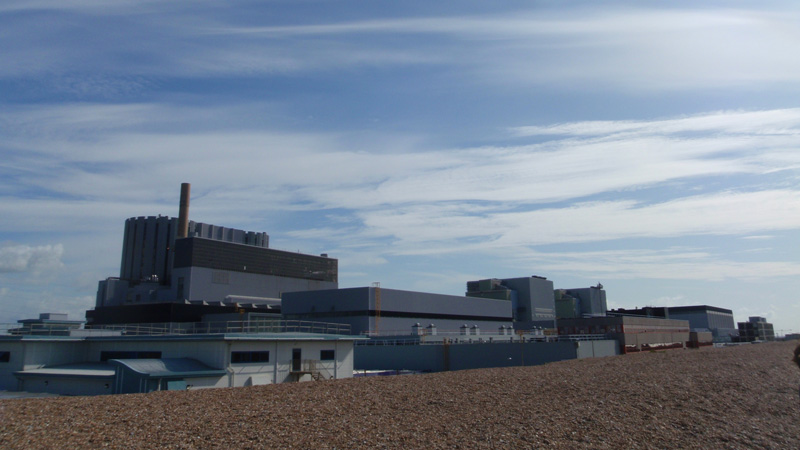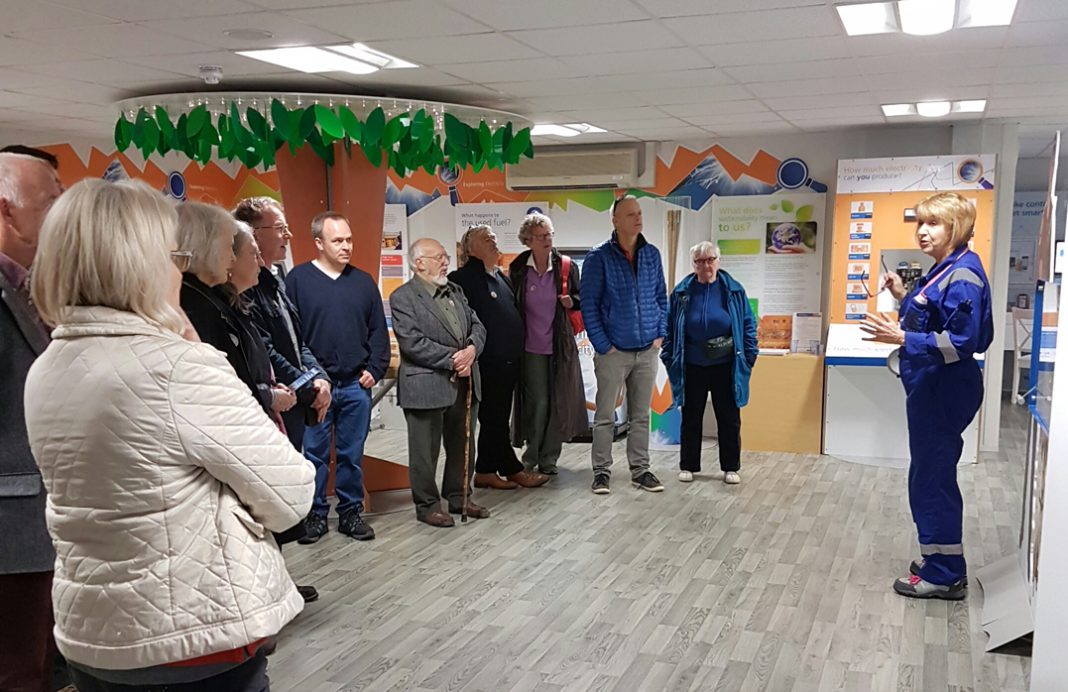When I moved to Winchelsea 20 years ago, I was lucky enough to enjoy views of Rye Bay from the top floor of our house. Not everyone will agree, but I’ve always felt that the huge mass of Dungeness nuclear power station, appearing like an immutable and somewhat menacing grey battleship shimmering on the horizon, added to the panorama.
Reason dictated that this was a force for good, keeping us supplied with relatively clean and cheap electricity around the clock. Yet in my mind’s eye, this view was my very own four-minute warning system.
Akin to a scene from a Raymond Briggs book, if there were to be an Incident, this would inevitably result in a mushroom cloud in the distance, giving me and my family just about enough time to scramble into the cellar.
So when Stephen Clift of the Rother Environmental Group organised a visit to Dungeness B Nuclear Power Station earlier in April, I was pleased to be given the opportunity to reassess my somewhat skewed preconceptions of this facility.
On the visit, the first thing that strikes me is the sophistication of both the security and safety measures. I know, right? It’s a nuclear power station. What was I expecting, Homer Simpson?
Visitors to the facility need to provide their names well in advance and photo ID or passport is mandatory. As part of the briefing, two friendly policemen from the Civil Nuclear Constabulary talk to us about security.
Assault rifles
They are wearing Heckler & Koch G36A assault rifles, Glock handguns, Tasers, bulletproof vests and a vast array of other kit. They don’t reveal how many of them there are on site, but the message is clear: not to be messed with. Security has been significantly ramped up ever since 9/11.

Also part of the briefing is a Q&A with two personnel with environmental expertise – one from the British Environment Agency, the other from France’s EDF Energy, which owns and runs the site. They are very open and forthcoming with their answers. The policy is one of transparency, no questions are out of bounds. These include:
• Are staff ever exposed to radiation? Very rarely, there is a strict protocol of justification and optimisation. We’re told that by some margin the most hazardous area accessed by staff is the smoking area!
• When will the plant be decommissioned? No earlier than 2028, at which time the licence can be renewed on an annual basis. However, this is unlikely to happen too often, if at all. The graphite rods gradually erode during the nuclear reaction process, once these deteriorate beyond a certain point, the operation is no longer safe and the plant will be closed down.
There are only eight nuclear plants still functioning in the UK, Dungeness B will be one of the last to close.
Empty pockets
After the briefing, the tour starts and we are split into three groups. There is an empty-pockets policy, so everything has to be put into a locker in the visitor centre before entering the plant proper.
High-vis jackets, hard hats, ear defenders, gloves, goggles, a radio set and a security tag are issued before we go through an airport-style check in with our guides. We then go through a high-security entry gate.

There is a new flood wall around the plant, which crucially also protects the back-up diesel generators. The protection was increased following the Fukushima accident six years ago when a huge wave swamped the Japanese nuclear plant.
The shingle wall facing the sea has also been increased in height and depth and, even during our visit, work here is ongoing.
The water required to cool the reactor is the reason why it is built next to the sea – three swimming pools’ worth of sea water is used every minute. Some fish do get sucked in, so there are many seagulls enjoying a free lunch.
Super-heated steam
Dungeness B is an advanced gas-cooled reactor using graphite as the neutron moderator and carbon dioxide as coolant, which through a heat exchanger transfers heat to boilers. The water fed into the boiler is then converted to super-heated steam.
This then drives the conventional turbine generator, which generates the electricity which is fed into the national grid. The steam condenses and is fed back into the boilers. There are two reactors, each producing about 540MW around the clock. The massive generators weigh 350 tonnes each.
After that, we visit the viewing platform to the nuclear hall, which is both serene and vast. The great height is needed to lift the rods into the reactor core.
A maintenance ‘outage’ is required this summer, which necessitates a surge in staff to organise. These outages occur every three years.
We do not get anywhere close to the control room, however we do get to see the simulator, which is an exact replica used for training purposes. The pros and cons of nuclear energy as opposed to other energy sources is discussed, but that is too big a topic to cover in this article.
Concluding the visit, we have an all too brief talk by Owen Leyshon of the Romney Marsh Countryside Partnership. The reintroduction of shor- haired bumblebees is discussed, but also the big influx of visitors to the residential part of Dungeness, more than a million a year, and the problems this can pose.
If you are interested in the activities of the Rother Environmental Group, please contact us: info@rotherenvironmental.org.uk
Photos: Anthony Kimber and Rye News library




This was a great visit organised by Rother Environmental Group. If you would like to join us, please contact me on s.clift@btinternet.com Thanks Stephen Clift, REG Secretary